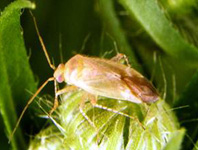Abstract
The study of mitochondrial and nuclear DNA sequences reveals that the polytypic Blanus strauchi is a species complex including three well-defined allopatric clades, one of which consists of two sub-clades. Only the two sub-clades of the Western clade are morphologically diagnosable in the field, whereas obvious characters to distinguish the Central and the Eastern clades are lacking. However, all four clades show significant statistical differentiation on meristic traits, as well as in morphometric characters of the head when compared by means of the geometric morphometrics. The genetic distance between the three major mitochondrial clades is comparable to the p-distances for the same markers observed between Blanus species-pairs from Morocco and the Iberian Peninsula, respectively. The nuclear marker confirms the mitochondrial clades, and shows that the three major clades do not share any haplotypes, as an indication of restricted gene flow among them. On the basis of this evidence, the taxonomy of Blanus strauchi is re-assessed: the Western clade corresponds to B. strauchi, with two subspecies: B. s. strauchi and B. s. bedriagae. The Central clade corresponds to B. aporus, here elevated at the species rank. For the eastern clade there are no available names, and therefore it is described here as Blanus alexandri sp. nov.

